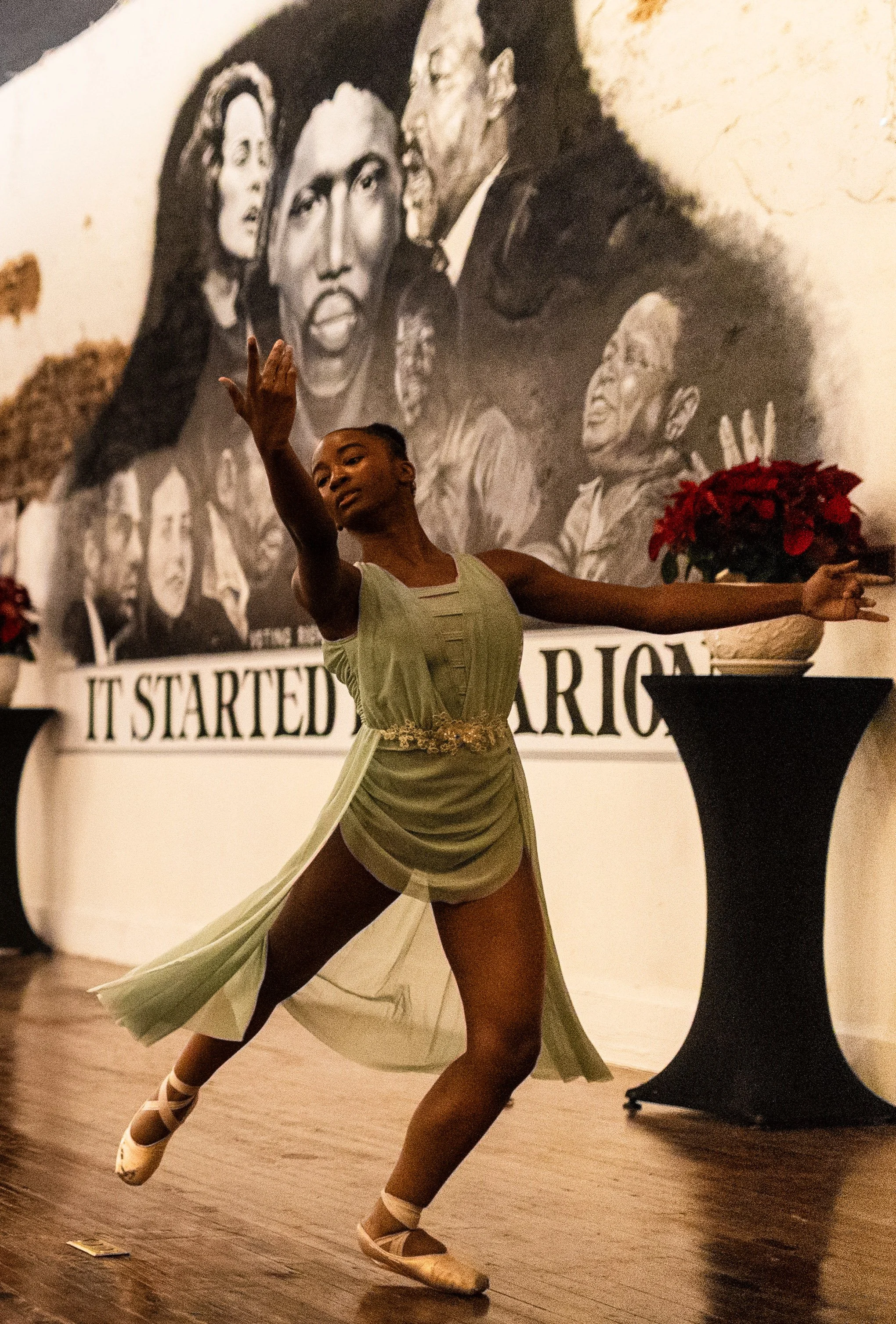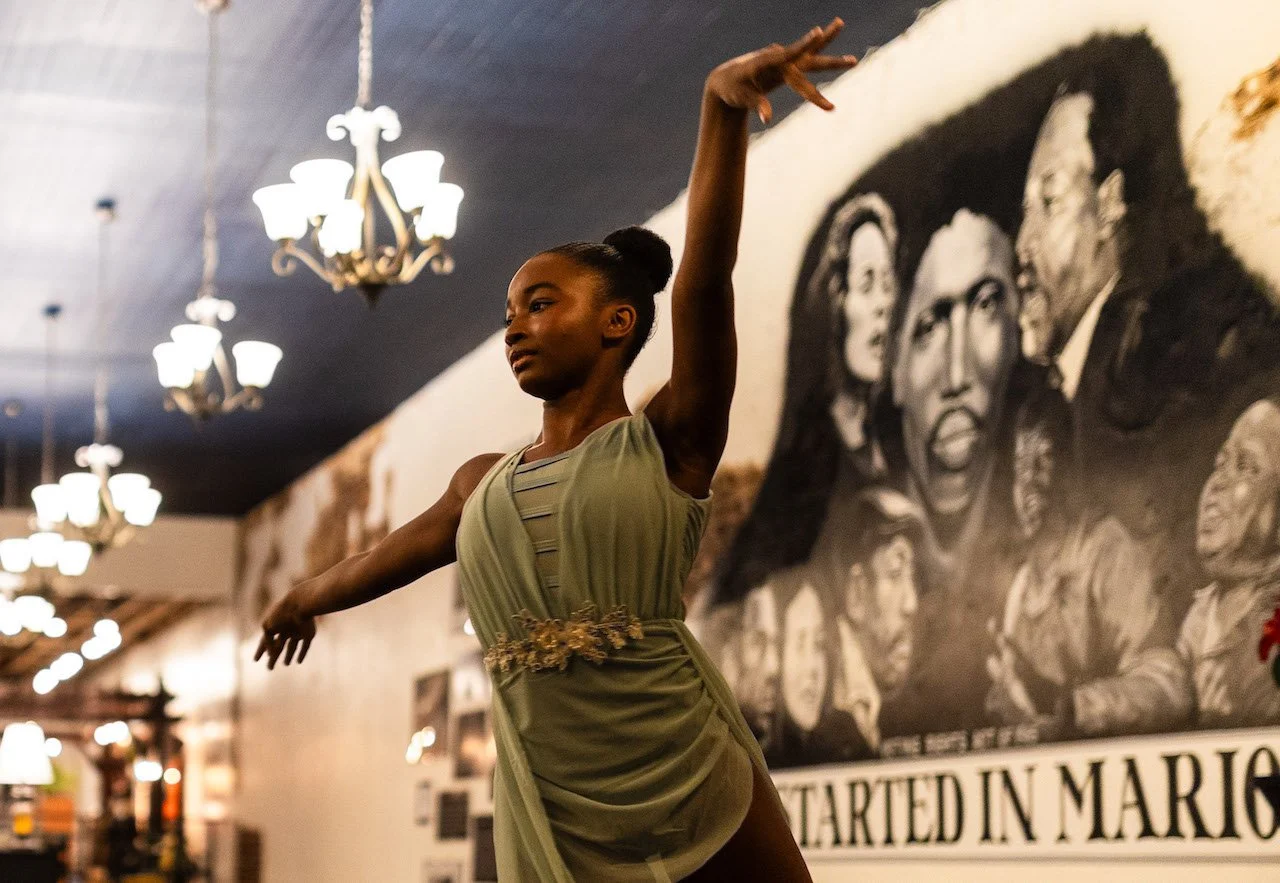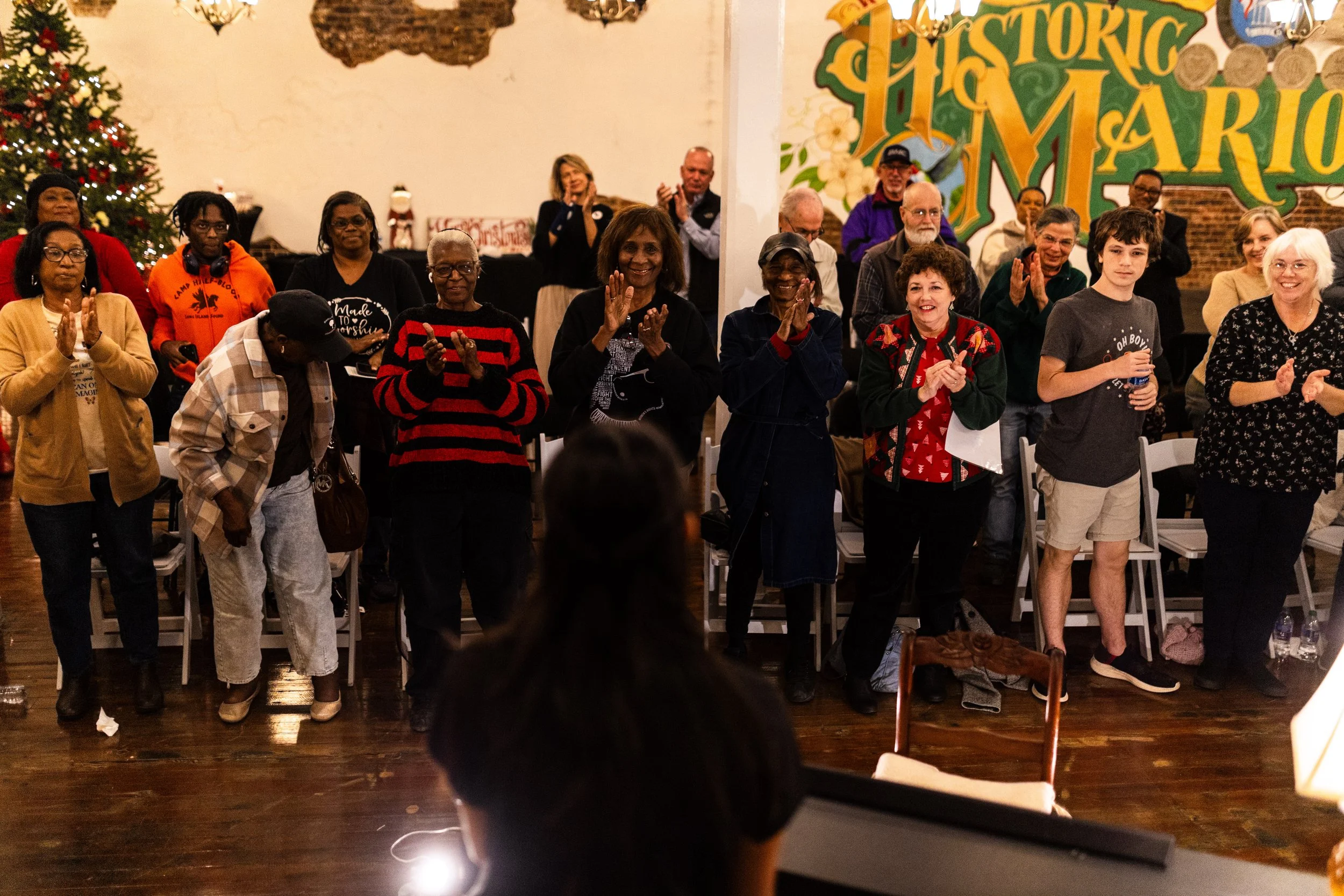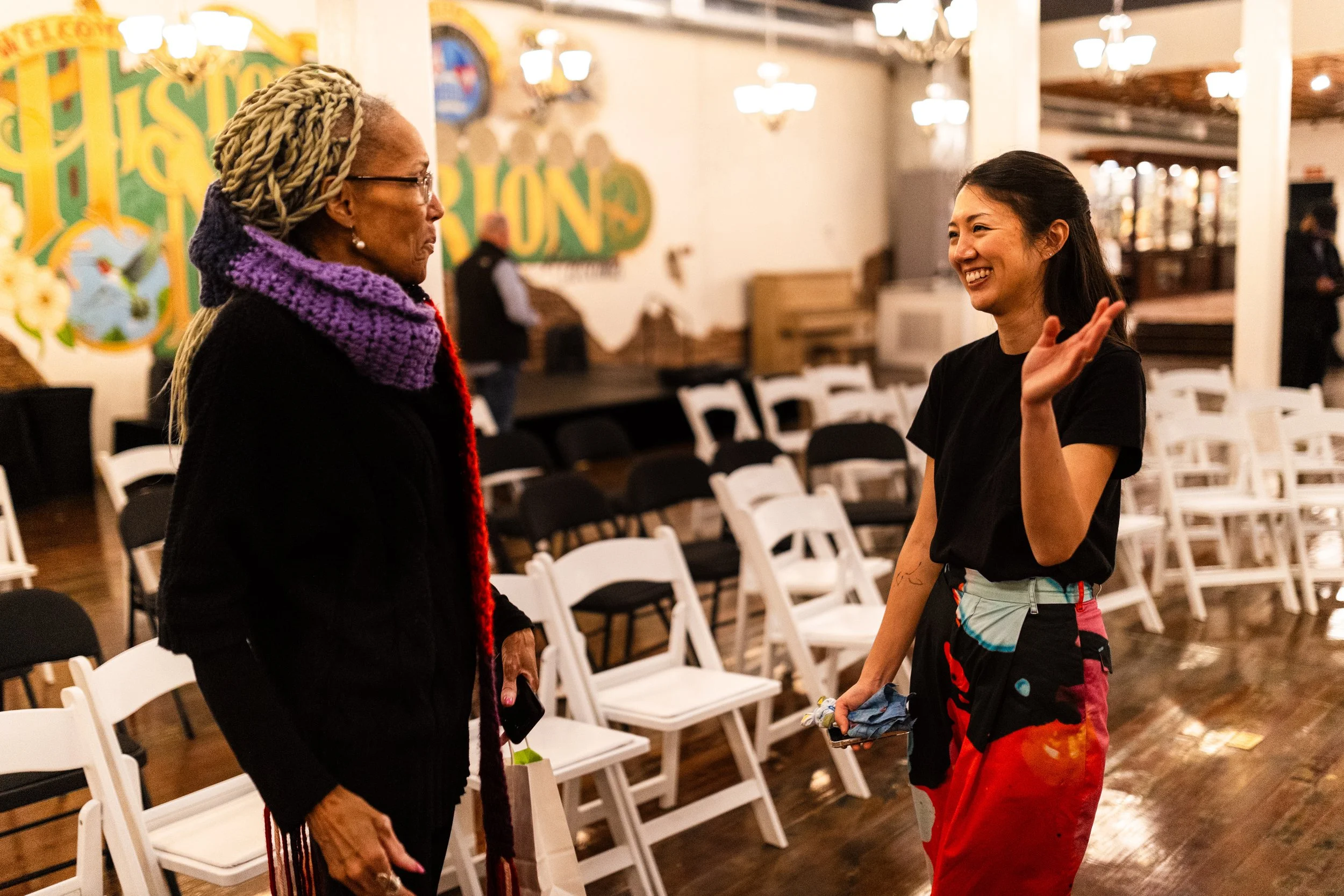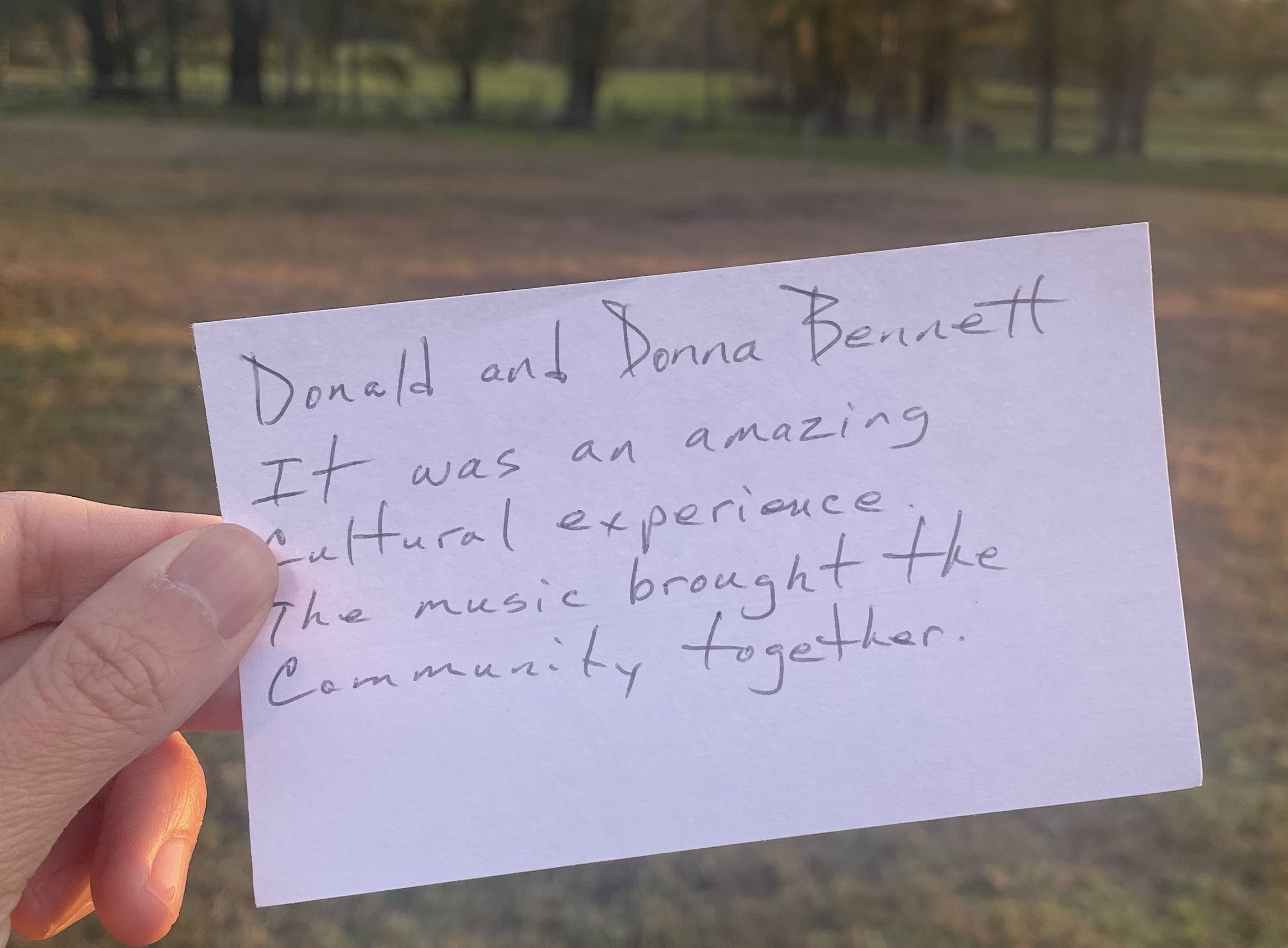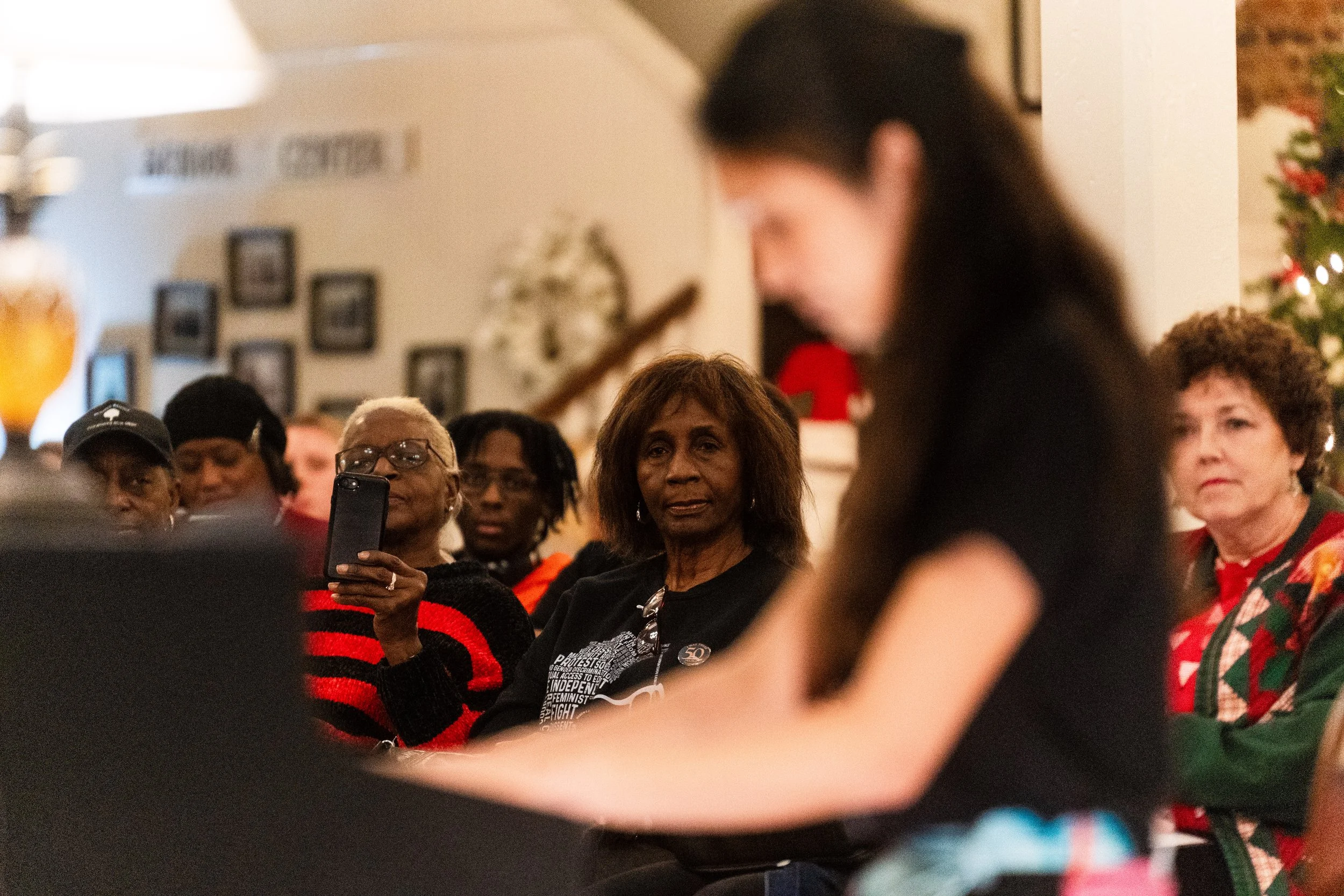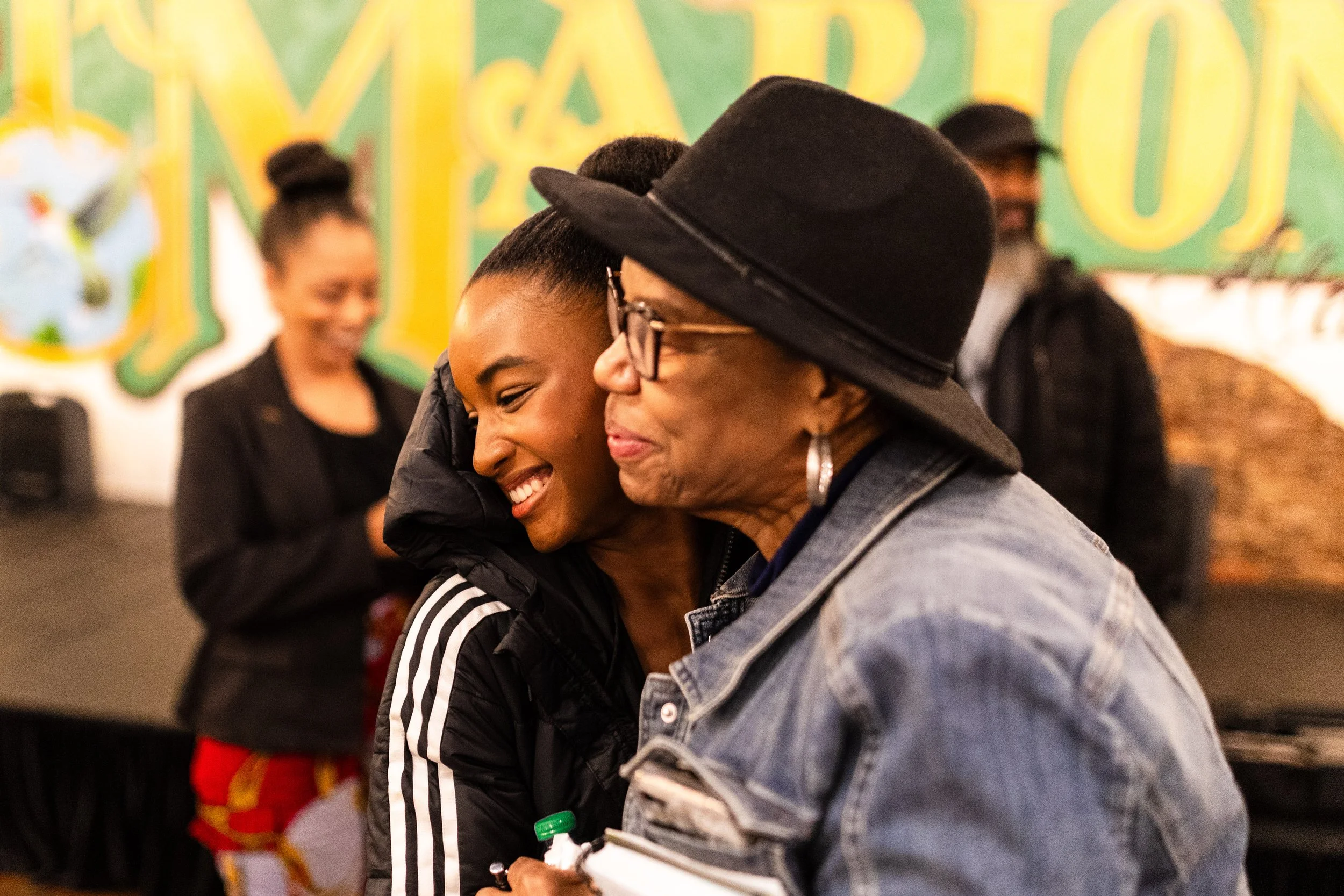MARION, ALABAMA
December 4, 2023
Presenter: Marion Art Center
Population: 3700
Race: 69% Black, 27% white
33% below the poverty line
It was a remarkable moment, to have a racially diverse classical concert in the Black Belt of rural Alabama.
[blog continued after photos]
Photos by Will McLelland
Earlier in York, I had befriended a Marion artist-couple, Casey and John. They invited me over to their home, a treasure trove filled to the brim with textile art, antiques, artifacts, and cats. Their roots in the Black Belt span generations, and they love it here; they told me they have a tight-knit and sizable LGBTQ community in Marion, which surprised me, given how conservative Alabama is. Actually, the Black Belt forms a “Blue Belt," consistently voting Democratic.
Casey and John put me on the back of their pickup to show me their land, which they said they have “some” of. It was absolutely MASSIVE, complete with an eagle’s nest atop a tall tall tree. This was my first time seeing how beautiful the Alabama landscape is, and it clicked for me then that in Florence Price’s music is a yearning to return to this beautiful southern land. Price was from Arkansas but had to flee north when threatened with white violence, since her family was elite, educated, and too politically active.
My host for the evening concert was Susan Passmore, who owns the Marion Art Center with her husband Ed. Susan has roots here, and decided later in life to return to Marion, buy one of the defunct buildings downtown, and pour time, energy, money, and love into it. She envisioned that after all the demolition and renovation, it would be a space that would bring people together and revitalize the town. The building is breathtaking now, with two murals as centerpieces. One mural memorializes Marion’s role in the civil rights movement. It was in Marion that Jimmie Lee Jackson was killed by police during peaceful protest, sparking the Selma to Montgomery marches. The mural proclaims: “It started in Marion.”
When a community leader has this deep sense of giving and duty, combined with their ability to recognize art’s power to transform - that’s the most ideal Gather Hear partner. Thinking back to what I witnessed in York - the economic downturn in Black communities that followed white flight, which continues today - I thought about the significance of someone like Susan (who is white) choosing to return, commit, and contribute here.
Rewind to my Louisiana tour, I had learned first hand that although there are many more Black people down South, it is often segregated here. Driving around aimlessly in a dozen small cities, I saw it’s almost always divided into the Black part of town and the white part of town. When I would ask strangers where they recommend I play a pop-up concert, white people would point me to white establishments, and Black people to Black ones.
But in Alabama, I wanted a concert where those divides could melt. An occasion to bring the two races together in a location where racial violence and injustices raged, coming together to share a musical experience. And not just any musical experience, classical music - so impossibly loaded with associations with whiteness. On top of that, the music is played by me - a Japanese immigrant from Boston. The scene here is at once so complicated and layered, yet if you were there, it was also so simple and deeply human - we were just there to enjoy music together.
People didn’t just come to attend, they truly listened - hanging onto every word and note - and even bursting out in standing ovation after Scriabin’s 2nd Sonata, even though it wasn’t my last piece. There were many factors for success here, first and foremost Susan’s relationship with the community. Also, Layla Love, my dancer-collaborator from York, had graciously agreed to join me for this concert, on the Florence Price piece. Everyone was mesmerized to see ballet up close. Especially for the Black elders, 14-year old Layla seemed to remind them of their granddaughters, asking for a picture with her afterwards.
For me, it was an honor to meet Della, who herself had marched from Selma to Montgomery as a teen. I would meet several people throughout tour who were part of the Civil Rights movement. For a northerner, that history can feel distant; meeting folks was a reminder that the racial narrative in this country is still a living story, not an artifact. We are all part of it, and the racial justice work is ours to carry forward.
It was a remarkable moment, to have a racially diverse classical concert in the Black Belt of rural Alabama. My deepest thanks to everyone who was part of the evening.
